#egyptologists
Text
Ancient Egypt and Ostrich Feathers
Have a question for the Egyptologists and knowledgeable fans of Ancient Egypt about ostrich feathers.
(btw is there an Egyptologist Tumblr community? I follow @thatlittleegyptologist but don't know of any other accounts. HMU!)
When I was in Egypt last month I went to the Grand Egyptian Museum to take the very limited tour of the atrium they offer now. It... wasn't worth the money. Anywho, our tour guide did his best to make it seem valuable by talking a LOT about each thing he showed us.
Next to the colossal statue of Ramses II that dominates the atrium there's a table showing the emblems of royal iconography. The sun disk, the nemes headdress, cow horns, and a feather. He asks us if we know what that last one is and I or someone says it's the feather of Ma'at. Correct! Do we know what bird it comes from? The ostrich, someone else says. Why did they choose ostrich feathers for Ma'at and also certain crowns?
On this trip I had gone to the Nubian museum and thus had just seen several pieces of art from pre-historical peoples that utilized ostrich eggs, including a famous one that had three pyramids etched into it along with some animals. So I said something like: The ostrich has been an important animal even before the pharaohs. They relied on it for food and made art with the eggs. The tour guide (Mark) said: That's an awfully materialistic view. No, that's not why.
Now... I know I'm not an expert even though I know a lot about ancient Egypt. But "a materialistic view"? Like somehow it's not enough that ostriches provided food and probably were used in other, important ways? Why do you think Hathor is represented as a cow and there are cow horns incorporated in crowns? Because they look cool? wtf?
Mark then goes on to tell this story. Back in the dawn of civilization in Egypt the Egyptian man didn't have much to do during the day. (eyebrow raise) So he started collecting feathers from all the birds that flew above him in the sky. (...um... wait...) He would collect and then count the barbules and do you know what he discovered? Only the ostrich had the same number of them on both sides. That's why this is the feather of balance and justice.
Friends. I have never wanted to scream SHENANIGANS or at least CITE YOUR SOURCES so much in my life. Like... what?
Leaving aside the implication that ostriches were somehow flying above ancient Egyptians or that there was some point where men didn't have a dang thing to do all day but count the little hairs on feathers, I feel like this explanation is complete hooey. I mean, it could be that all or some of an ostrich's feathers have the same amount of barbules on either side of the middle bit. You might even be able to convince me that this isn't true for any other bird that someone from the Nile valley 6,000+ years ago had access to. But I'm going to need a ton of supporting evidence that this is the sole reason why the feather of Ma'at is an ostrich feather and not for the "materialistic" reasons I cited.
Also, I'm sorry, but I'm real sure predynastic Nile valley dwellers were far more concerned about food and shelter than coming up with complex reasons for using a certain kind of feather to represent a metaphysical thing.
However, I could be wrong! So I'm asking: is there evidence for Mark's version of events? Is this, you know, written somewhere in a papyrus or on a temple wall or another place? I would honestly love to read any papers on this subject, whatever the background on it.
As to the Grand Egyptian Museum, I really hope that whoever they hire to give tours when the whole thing opens are better at this than Mark. I wasn't impressed with his tour overall and eventually gave up listening to him once I saw that there was a gelato place open for business inside.
#Egyptology#Egyptologists#Calling for Egyptologists!#Egypt#Ancient Egypt#I need to know if Mark is right#okay kay what I really want to know is that mark is wrong
322 notes
·
View notes
Text
As I reading "The Snake, The Crocodile and The Dog", another Amelia Peabody mystery, I feel I should point out that there are several people mentioned in the story who were very real and important in the field of archaeology.
Gaston Maspero (M. Maspero)- he was a leading Egyptologist, who specialised in Egyptian language. In November 1880 Maspero went to Egypt as head of an archeological mission sent there by the French government, which ultimately developed into the well-equipped Institut Français D'archéologie Orientale. Upon the death of Egyptologist Auguste Mariette in 1881, M. Maspero took on the role as director-general of excavations and of the antiquities of Egypt. In 1882, he discovered the tomb of Amenemhet I.
Emerson's "rival", Petrie, was actually a very important person in the field of Egyptology. Flinders Petrie was a British Egyptologist and Archaelogist, whose contributions greatly influenced both fields, and their establishment as scientific disciplines. Petrie is best known for creating a system of relative dating using pottery styles called "seration".
Also mentioned, briefly, was the "square-jawed, clean-shaven American named Reisner". They are referring to George Reisner. He was an Egyptologist and Archaeologist as well as the director of the Harvard-Museum of Fine Arts, Boston expedition. His work was extensive and he made contributions to the fields of Egyptology and Archaeology. He dedicated his life to bringing the beauty of Ancient Egypt to life. He kept meticulous records of every object found. His work still lives on throughout the world through his documentation, which has allowed the findings in Egypt to be disseminated throughout the world.
Also mentioned in the book, however briefly, is a chap named Lepsius: “Especially in view of the fact that Lepsius mentions seeing such tombs in 1843.”
Lepsius is Karl Richard Lepsius, a German Egyptologist whose many contributions helped establish the scientific field of Egyptology. Lepsius led the Prussian Expedition to Egypt and Nubia (Syria) between 1842-1845. The main outcome of this expedition was "Denkmäler aus Ägypten und Äthiopien" (a collection of plans, maps, and drawings of Ancient Egyptian tomb and temple walls). This was Lepsius's greatest legacy. He had also been a Professor of Egyptology at Berlin University and a co-director of the Egyptian Museum in Berlin.

#elizabeth peters#amelia peabody#Amelia Peabody Mysteries#historical fiction#books#reading amelia#currently reading#egyptian themed mysteries#egyptologists#archæology#Karl Richard Lepsius#George Reisner#Gaston Maspero#Flinders Petrie#archaeology mysteries#famous Egyptologists#Harvard-MFA#mystery books#Emerson and Peabody#The Snake The Crocodile and The Dog#Barbara Mertz#Egyptology
2 notes
·
View notes
Text
Prince Pentawere: The Screaming Mummy
Emerging from the depths of ancient Egyptian history, Prince Pentawere, better known as the "Screaming Mummy," remains an enigmatic figure shrouded in intrigue and controversy. His life, marked by ambition, betrayal, and a gruesome demise, has captured the imagination of historians and Egyptologists for centuries.
A Life of Privilege and Ambition
Born into the illustrious 20th Dynasty, Prince Pentawere was the son of Pharaoh Ramesses III, a powerful and influential ruler who reigned over Egypt for over three decades. As a prince, Pentawere enjoyed a life of privilege and luxury, growing up in the opulent palaces of the New Kingdom.
However, beneath the veneer of wealth and status, Pentawere harbored a deep-seated ambition to ascend to the throne. His mother, Tiye, a secondary wife of Ramesses III, is believed to have played a significant role in fueling Pentawere's aspirations for power.
The Harem Conspiracy: A Plot to Seize the Throne
As Ramesses III's reign progressed, tensions within the royal household grew. Pentawere, increasingly impatient to assume his father's mantle, embarked on a treacherous path to seize power. In 1155 BCE, he orchestrated a plot known as the "Harem Conspiracy," a complex scheme involving multiple co-conspirators, including his mother, Tiye.
The plot aimed to overthrow Ramesses III and place Pentawere on the throne. The conspirators planned to use magic and violence to eliminate the pharaoh and his supporters, paving the way for Pentawere's ascension.
A Betrayal and a Tragic Demise
Despite its meticulous planning, the Harem Conspiracy was ultimately foiled. The pharaoh's loyalists discovered the plot and swiftly apprehended the conspirators. Pentawere, along with his mother and other accomplices, was brought to justice.
The Judicial Papyrus of Turin, an ancient Egyptian legal document, details the proceedings against Pentawere and his co-conspirators. The document describes how Pentawere was offered the chance to commit suicide rather than face execution.
Faced with this ominous choice, Pentawere chose to take his own life. The manner of his suicide remains unclear, but some believe he may have ingested poison or hanged himself. Whatever the method, his death was likely swift and agonizing.
The Screaming Mummy: A Gruesome Discovery
In 1881, during the excavation of the Deir el-Bahari cache, archaeologists unearthed an unusual mummy. The body, wrapped in sheepskin and bearing a contorted expression, its mouth agape in an eternal scream, was later identified as Prince Pentawere.
The mummy's horrified expression sparked speculation about the cause of Pentawere's death. Some suggested that the muscles of his face were frozen in a scream due to the method of his suicide, while others believed it was a deliberate act, intended to convey his anguish and despair.
A Legacy of Intrigue and Mystery
The story of Prince Pentawere serves as a reminder of the complexities and dark undercurrents that often pervade the corridors of power. His tale of ambition, betrayal, and a horrific death continues to fascinate and intrigue, adding another layer of mystery to the captivating narrative of ancient Egyptian history.
The "Screaming Mummy" remains a poignant symbol of Pentawere's tragic fate, a stark reminder of the consequences of ambition and the fragility of life in the ancient world.
#PrincePentawere#ScreamingMummy#AncientEgypt#MysteriousIndividual#Egyptologists#MummifiedRemains#Archaeologists#UntimelyDeath#ScientificMethods#Research#MummificationProcess#HorrifiedExpression#CruelFate#HaremConspiracy#RamessesIII#Tiye#JudicialPapyrusOfTurin#DeirElBahriCache#AncientEgyptianHistory#AmbitionBetrayalDeath#LegacyOfPentawere#HiddenStoriesOfAncientEgypt
0 notes
Text
Eygptologology
A documentary by a group of Egyptian archeologists and anthropologists trying to understand why other people would be fascinated with and loot antiquities from Egyptian history.
#bad idea#movie pitch#pitch and moan#meta#documentary#egyptology#egyptologist#egyptologists#racism#colonialism#anthropology#history#egyptian history#ancient history#ancient egypt#ancient egyptian history#archeolgst#archeology#grave robbing#looting#antiquity#antiquities#ancient world#egypt#egyptian
0 notes
Text
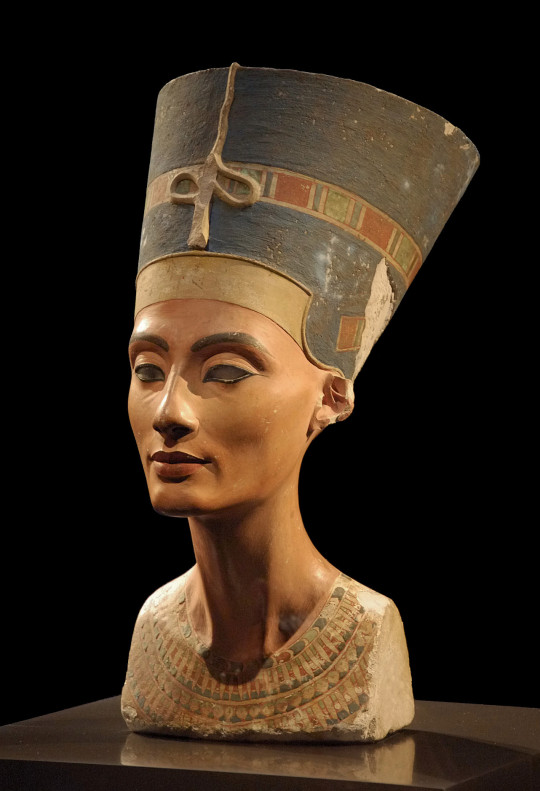
Nefertiti Bust (1345 BC)
#archaeology#archaeologists#egypt#egyptology#egyptologist#anthropology#artifact#artifacts#art history#1300s BC#statue#bust
744 notes
·
View notes
Text

every day i am subjected to takes
"inexplicable" my ass

#there are sources on that post the very least you could do is check them before you think you need to correct me#i don't mind people going 'huh this info is not what i was told' but your first instinct should be to cross reference#not kneejerk into 'OP is very definitely wrong' when what OP did was make post correcting common misinfo#OP *can* be wrong even if OP is an egyptologist but please. at least be normal about this instead of doubling down on the misinfo
945 notes
·
View notes
Text
'Medjed is the first character in narrative tradition to break the fourth wall'

No.
(that and multiple Mesopotamian gods who are even older)
#god that post is going nuts with that addition and it'll be yet another thing Egyptologists will have to come up against#the internet will just invent history for things and then wonder why the historians are annoyed
87 notes
·
View notes
Text
people trying to defend this classification system like "yes but" "well actually" "what if"
lads they got the dates of whole-ass eras wrong by multiple centuries, there are several objects that "could be 4th century BCE could be 19th century CE we'll never know" i think they might just be stupid
but above all you should not need higher education in classics, egyptology, archaeology, or museum studies to be able to even begin to parse the information presented
#if it's tripping up a whole-ass classicist and a phd egyptologist what fucking hope do you think normal people have#of walking into this musem and knowing what is greek what is egyptian and what is roman#if you have to have a working knowledge of timelines and art styles and whatnot BEFORE YOU GET THERE that kind of defeats the main purpose#of the fucking museum
48 notes
·
View notes
Note
iron triangle in egyptology class
[Fun fact that I want to explain to Lyx, who has not seen any dmbj except the heihua movie: none of these guys are archaeologists or historians of any kind; the only one with a degree (as far as we know) is Wu Xie, who studied architecture. I imagine these are evening classes they're taking as a hobby, finding out more things about different tombs around the world... that's what AUs are for, aren't they?]
"-- AND they're teaching us to translate using Budge! Of all people! The man's been dead for near a century and wrong for even longer, why can't they write something more decent!!" Wu Xie exclaimed, waving an old book around in a way that couldn't possibly be good for the spine.
"Sshhh Tianzhen, they'll kick us out of the library if you keep going like that," Pangzi hissed, though a quick look around told them their section of the library was deserted. Some pulling and prodding later, and Wu Xie finally sat back down in his seat--
-- only to jump right back up and start ranting again: "That's where the adverbial sedjem-en-ef with a cleft subject should go! Aargh, can't they get anything right??"
"Tianzhen! You're the one who chose the optional language course, you did this to yourself."
"I knoww..." Wu Xie flopped down in his chair, and slumped forward face first onto his notes. "That's why its so terrible."
A sigh that seemed to come from his very toes fluttered across his notes, and Pangzi turned to his own book-- just history for him, thanks, no ridiculous language juggling for Pang-ye. History, and some shiny treasures to look at. A man should know his own strengths.
"Xiaoge~," Wu Xie seemed determined not to focus on his work. Pangzi rolled his eyes at his book. "Xiaoge, what are you reading?"
Silently Xiaoge slid his book over to Wu Xie, who looked at it, and then remained quiet for a very long time.
"I studied architecture in Germany before, but this German... I can barely read it! How old is this book?"
Xiaoge answered without looking at the publication date on the first page: "1971."
"'71?? Hasn't someone taken the time to print a new version of this??" Wu Xie exclaimed again, and was hushed again by Pangzi. At least this time he sat down without urging.
"Whose brilliant idea was this again?"
Xiaoge shook his head in response.
"But why?" Wu Xie sounded plaintive. Clearly he was starting to regret his own idea of 'fun evening classes'
"They were very thorough, so no one wants to rewrite it," Xiaoge said, and Wu Xie's head connected with the desk with a loud thud.
~
Send me an ask with a pairing and an AU and I'll write you a ficlet!
#dmbj#tlt#no egyptologists were harmed in the writing of this ficlet#if you do happen to know something about egyptology: iykyk#iron triangle#au fic meme#jin writes#real friends send you ask memes even though theyre not in the same fandom#the first person to tell me what movie I'm referencing gets to make a fic request without the AU stipulation if they want#no googling but also id be impressed if you did manage to find this via google#brought to you by my own experiences at egyptology
16 notes
·
View notes
Text
tagged by @zaegreus thank you!! 💙🐳
coffee or tea | early bird or night owl | chocolate or vanilla | spring or fall | silver or gold | pop or alternative | freckles or dimples | snakes or sharks | mountains or fields | thunder or lightning | egyptian mythology or greek mythology | ivory or scarlet | flute or lyre | opal or diamond | butterflies or honeybees | macarons or eclairs | typewritten or handwritten | secret garden or secret library | rooftop or balcony | spicy or mild | opera or ballet | london or paris | vincent van gogh or claude monet | denim or leather| potions or spells | ocean or desert | mermaids or sirens | masquerade ball or cocktail party.
obviously can't choose between opera and ballet :') and london and paris are such different cities, they both have much to love about them. also i haven't been to paris since i was 12 but am going again this summer so mayhap judgement will shift
tagging @garlandgerard and some people i see in my notes a lot though most of them are prolly terror sideblogs who've already been tagged in this five million times and whose mains i do not know ignore meee if so @lieutenant-catboy-little @theroseandthebeast @croziers-compass @burrowingregg @euxara @20thcenturyvole @tideswept
#i love tag games lol#*gets tagged by an egyptologist* unfortunately i know very little about egyptian mythology and very much about greek adfasdflj#i think tumblr fucked up some of the tags so ill go back to fix that
7 notes
·
View notes
Text
In the Amelia Peabody Mysteries, they mention Howard Carter. If you don't know who he is, he is the one who discovered and opened the tomb of King Tutankhamen in 1922. This is a picture of him with Lord Carnarvon (His castle was the setting for Downton Abbey). Lord Carnarvon was Carter's "benefactor". He helped to fund the excavation.

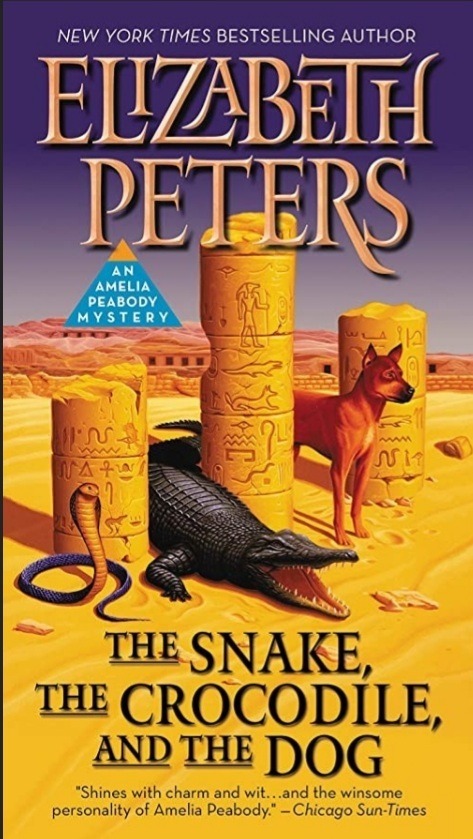
#reading amelia#amelia peabody#amelia and emerson#Amelia Peabody Mysteries#elizabeth peters#historical fiction#books#egyptian themed mysteries#egyptian archaeology#egyptologists#king tutankhamen#the snake the crocodile and the dog
1 note
·
View note
Text
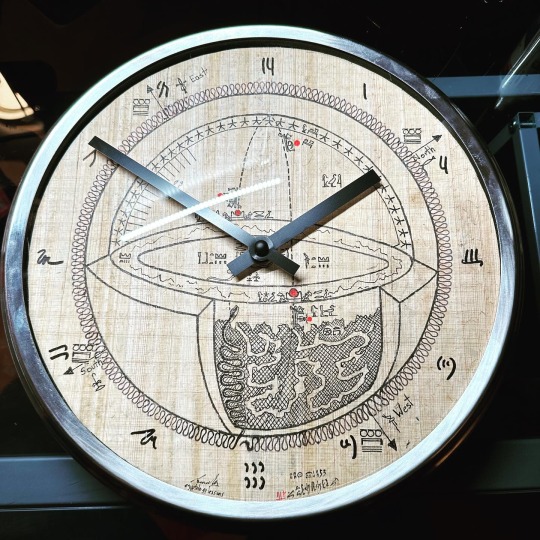

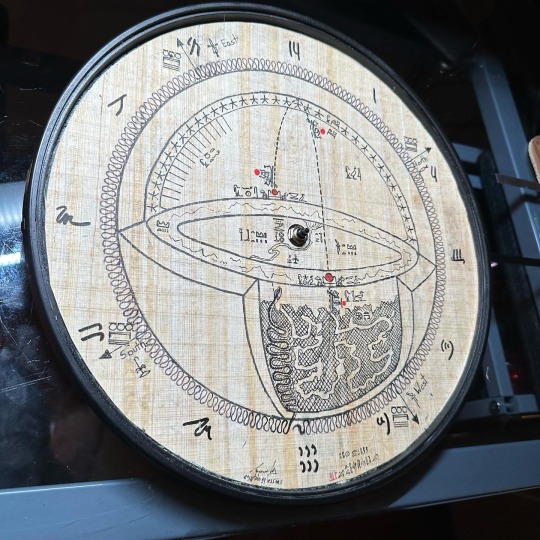





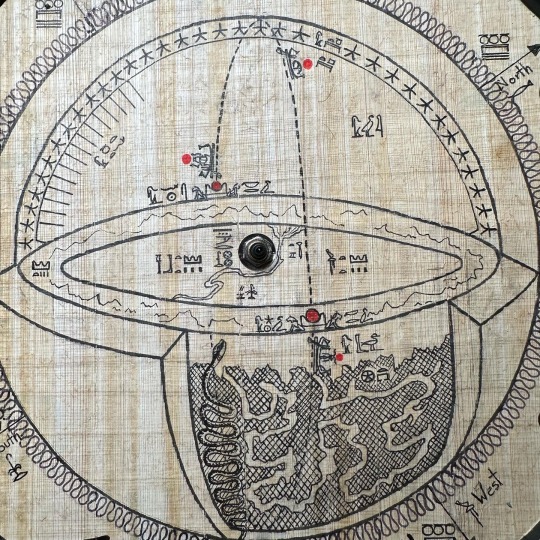

A modern recreation of the Ancient Egyptian cosmological world. The video provides details and explanation of the art, which is greated on natural papyrus paper.
Dimensions: Diameter 12”, Depth of Clock 2”
The original concept art derived from Egyptologist @Tito Vivas (Gracias/Thank you)
Photo of Tito shared by Egyptologist @elianubis (Gracias/Thank you)
𓋹𓎬𓋹𓎬𓋹𓎬𓋹𓎬𓋹𓎬𓋹𓎬𓋹𓎬𓋹𓎬𓋹𓎬𓋹𓎬𓋹𓎬𓋹𓎬𓋹𓎬𓋹𓎬𓋹𓎬𓋹
🎥 @egyptologylessons 𓋹𓊽𓋴𓆖𓎛𓇳𓎛 ©️ 𓊁𓊁𓊁𓊁𓊁𓊁𓊁𓊁𓊁𓊁𓊁𓊁𓊁𓊁𓊁𓊁𓊁
#Ancientegypt #ägypten #egyptology #egypte #egitto #egipto #이집트 #egypt #egyptologylessons #cosmology #mythology #hieroglyphs #hieratic #clock #egypte
#ancientegypt#egyptology#egypte#hieroglyphics#egyptologist#hieroglyphs#clock#cosmology#Ancient Egyptian#Ancient Egypt
24 notes
·
View notes
Note
Can you ask your egyptologist friend what this means
𓄽 𓋯 𓀍 𓉐
It's my ask page title and I wanna know how it translates
he says, and i quote:
It translates into nothing. The first sign literally just says the word has something to do with shit, lol.
your askbox is related to shit, apparently
8 notes
·
View notes
Photo

Nun lifting the sacred barque of Ra. Ra is represented in the middle as Khepry in His form of sacred scarab, flanked by seven Gods, three at left and four at right; on the top, Nut supporting Osiris represented with His arms and hands raised to receive the Solar disk. Scene from the papyrus of Anhai, "Chantress of Amon over the Phylae", "Leader of Musicians of Osiris", "Leader of Musicians of Nebtu and Khnum", and "Lady of the House"; XX Dynasty (ca. 1186–1070 BCE). Now in the British Museum... #iregipto #egyptpassion #mbplanet #ancientegypt #egyptology #kemetic #ancientegyptian #egyptologist #anticoegitto #egittologia #egiptologia #antiguoegipto #religion #pagan #paganism #polytheism #kemet #egypt #archaeology #egyptiancalendar #nut #nun #osiris #sun #khepri #ra #gods #goddess #goddesses #dailygods https://www.instagram.com/p/ChNEBKCrLSd/?igshid=NGJjMDIxMWI=
#iregipto#egyptpassion#mbplanet#ancientegypt#egyptology#kemetic#ancientegyptian#egyptologist#anticoegitto#egittologia#egiptologia#antiguoegipto#religion#pagan#paganism#polytheism#kemet#egypt#archaeology#egyptiancalendar#nut#nun#osiris#sun#khepri#ra#gods#goddess#goddesses#dailygods
184 notes
·
View notes
Text
people need to for real fucking stop projecting modern perspectives back onto ancient Egypt like jesus christ the bullshit i keep seeing, even/especially from folks who make it their day jobs to be vocal about respecting other cultural perspectives
#'i am going to ignore everything egyptologists say and just append my own modern interpretation of a thing i don't understand..#..the cultural significance of!' is a take i'm sick to my back teeth of seeing
202 notes
·
View notes
Text
Exhibit A: A 12 year old

a) 'go suck a fuck' is objectively the funniest way to tell someone to go fuck themselves oh my god
b) There's no mummy curse in that movie. Imhotep is cursed while still alive, as a punishment for trying to murder the Pharaoh. They read the spell to wake him up, but they are not cursed they simply wake him. Then he goes on a mission to put himself back together and resurrect his girlfriend, and they try to stop him. A lot of bad stuff happens, but it's not the result of a curse.
c) The masterpiece of the Mummy 1999, where the 'mummy' has full agency and isn't just mindlessly trying to murder people because he was awoken (in fact he only kills those who have his canopic jars), simply existing as a film doesn't justify constantly referring to anything non white ancient people do as 'cursed'
#has no one worked out why Egyptologists love that movie??#it's because it DOESN'T do most of the terrible shit movies like this do
281 notes
·
View notes